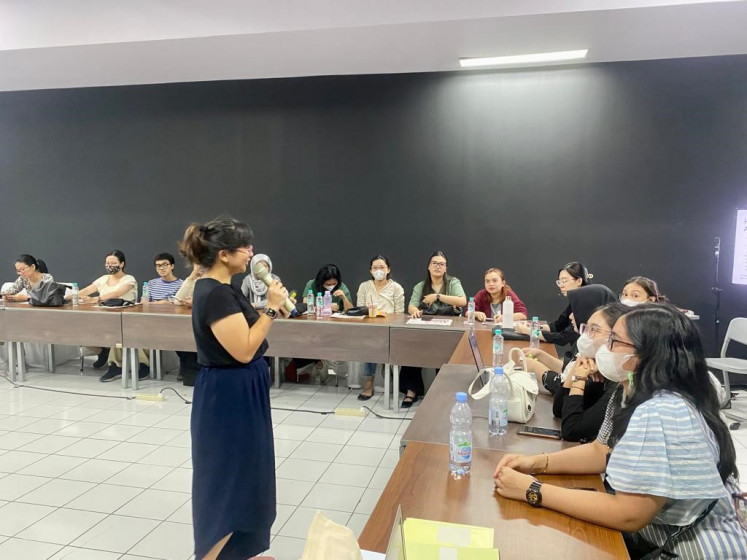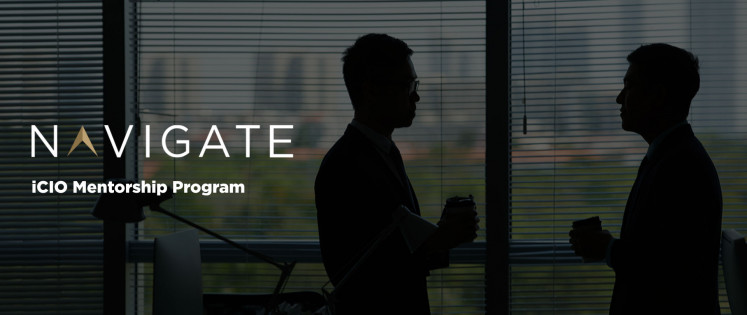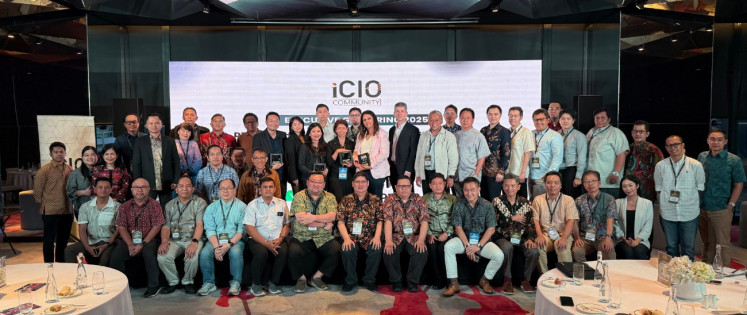Popular Reads
Top Results
Can't find what you're looking for?
View all search resultsPopular Reads
Top Results
Can't find what you're looking for?
View all search results‘The Jakarta Post’ 40th anniversary: Delving into social media, multimedia storytelling
Change text size
Gift Premium Articles
to Anyone
T
he final sessions of the Media Literacy Bootcamp, held as part of The Jakarta Post’s 40th anniversary celebrations, took the discussion into the realm of social media and storytelling.
The first session, on “Social Media for Change: Harnessing the Power of Online Platforms”, was presented by social media coordinator Siti Parhani of online magazine Magdalene.
Siti opened the workshop by sharing Magdalene’s social media strategy.
“At Magdalene, we try to listen to our audience and brand the issues by engaging with the actual issues that are happening. Most are about gender equality, feminism, human rights, sexuality, social, religion and spirituality,” said Siti.
The first steps to planning content, she continued, began with determining the content’s objectives and purpose. Siti added that language was also key to increasing social media engagement, especially to elevate issues as part of daily conversation.
She also touched on the three types of target audiences and the corresponding goals for social media content: “cold target” refers to users unaware of the subject matter who need to be attracted; “warm target” comprises users who are already aware of a subject but need to be given current information; and “hot target” describes users knowledgeable about a subject matter that can be called to action via deeper engagement.
“When creating content, the crucial thing is to be concise, clear and compelling,” said Siti.
The second Bootcamp session presented the theme of “Multimedia Storytelling: Engaging the Audience” by writer and editor Ninda Daianti.
Ninda explained that contemporary storytelling was mostly delivered through social media platforms, such as TikTok.
Ninda Daianti unveils the power of contemporary storytelling through social media platforms at 'Multimedia Storytelling' workshop (JP/Michiko)“What should be stressed is how people want to read a story and go deeper into the content that you want to build,” she added.
Multimedia storytelling involves using a variety of media to tell a story. This can include text, images, audio, video and interactive features that can connect the audience on an emotional level through multidimensional and immersive experiences, thereby enhancing engagement.
One key element of multimedia storytelling is user interaction, divided into visual and aural elements, including data visualization. Other elements are to employ a nonlinear structure with cross-media collaboration, as well as taking a logical approach that involves critical thinking.
Ninda introduced the Bull’s Eye Theory of communication to design a simple storytelling structure, with the method consisting of identifying the what, how and why of the desired response from a target audience.
Amelia, a participant, found the final Bootcamp sessions to be interesting and informative. She also noted that practice was vital for both journalists and aspiring writers.
To join any future workshops or discussions hosted by The Jakarta Post, subscribe to our newsletter at /newsletter











